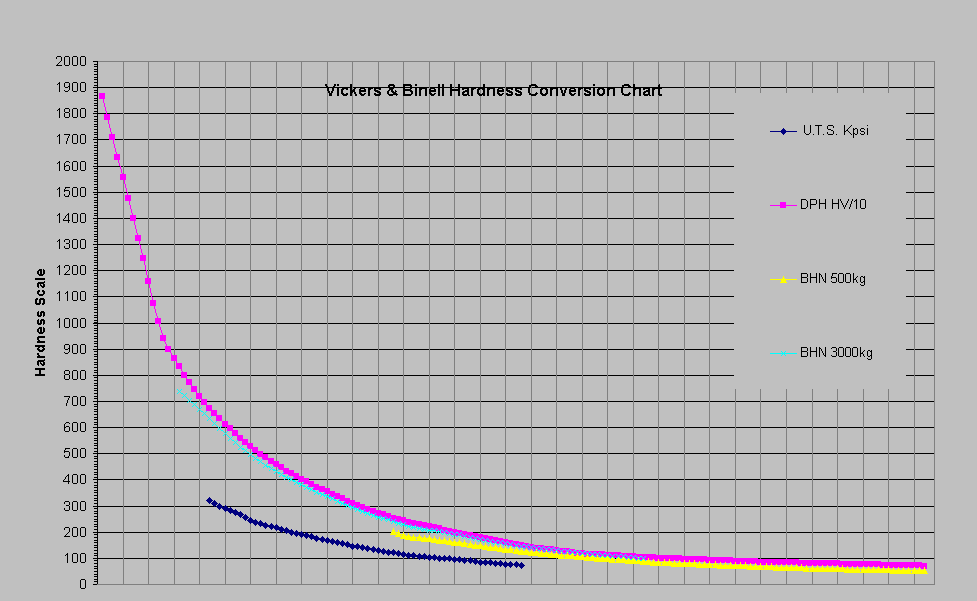

The average of two measurements taken at right angles is used for the diameter to ensure accuracy.Ĭompared to the other test methods, the Brinell ball makes the deepest and widest indentation, so the test results average hardness over a wider area. The Brinell Hardness Number may be calculated from the diameter of that indentation. The diameter of the indentation left is measured by a low powered microscope.
Vickers to rockwell conversion full#
The full load is applied for 10 to 15 seconds for iron or steel and at least 30 seconds for other materials. For softer materials, there are alternate scales using a 1500 kg or 500 kg load to avoid excessive indentation. The Brinell Hardness Test consists of indenting the test material with a 10mm diameter hardened steel or tungsten ball subjected to a load of 3000 kg.

The Vickers and Brinell methods don’t suffer from this effect. The Rockwell Hardness Test is conveient to automate, but it suffers from many arbitrary scales and possible effects from the specimen support anvil. Testing parameters for the various Rockwell Hardness Scales… The various Rockwell Hardness Scales differ in the nature of the indenter as well as the Major Load:

The difference between the indentation after that minor recovery and the datum established by the minor load may be used to calculate the Rockwell hardness number. Removing the major load results in a minor recovery of the material in most cases. An additional major load is applied, which increases penetration. no further indentation at that load is happening), a datum position is established. The indenter is forced into the test material under a minor load, usually 10 kgf. In the Rockwell Hardness Test (whose values are referred to with the abbreviation “HR”), a diamond cone or steel ball indenter is used. In Rebound Hardness measurements, the height of the “bounce” of a dimaond tipped hammer dropped from a fixed height onto the test material determines its hardness. This is the most common method of hardness testing used for CNC and machining purposes, and the Rockwell, Vickers, Shore, and Brinell Hardness scales are all based on Indentation Hardness.

After the material under test is subjected to a specially loaded and dimensioned indenter, the dimensions of the indentation left behind in the test subject determine the hardness. Indentation hardness measures the resistance of a sample to deformation due to a constant compression load from a sharp object. Scratch Hardness testing is based on the idea that harder materials will scratch softer materials. There are three ways hardness is typicall measured: Scratch Hardness Hardness is dependant on many factors including strength of intermolecular bonds, ductility, elastic stiffness, plasticity, strain, strength, toughness, and many more. Hardness is a measure of how well a solid material resists permanent shape change when a compressive force is applied. Jump To: Hardness Conversion Chart & Calculator Rockwell Hardness Brinell Hardness Vickers Hardness Article on Work Hardening / Strain Hardening Definition of Hardness Latest news: We just added a slick new Hardness Conversion Calculator to our G-Wizard software.


 0 kommentar(er)
0 kommentar(er)
